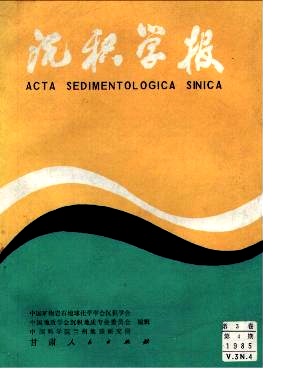SEDIMENTARY FACIES OF THE CARBONATE ROCKS OF THE UPPER DEVONIAN IN GUILIN DISTRICT, GUANGXI
- Received Date: 1984-01-27
- Publish Date: 1985-12-10
Abstract: The Upper Devonian in Guilin district consists of a series of carbonate strata of marine facies. Obviously, they are of the same period and different facies. They can be divided into two lithofacies. One is dolomitic limestone facies, its lower part being Guilin Formation ( D3g ) and its upper part Rongxian Formation ( D3r ). The other is siliceous lenticular (nodular ) limestone facies, its lower part being Liujiang Formation ( D31 ), its upper part Sanli Formation ( D3s ). Guilin Formation can be compared with Liujiang Formation while Rongxian Formation corresponds to Sanli Formation. The author suggests that Guilin Formation be formed in a semi-restricted lagoon environment of a carbonate platform ( semi-restricted lagoon facies ) , Rongxian Formation in a tidal flat environment ( tidal flat facies), whereas Liujiang Formation was formed in a deep-water basin enviroment (deep-water basin facies ) of a carbonate platform, Sanli Formation in a semi-deep-water basin environment ( semi- deep-water basin facies ) of a carbonate platform. Lithologically, the semi-restricted lagoon facies is dark in colour, medium in stratification. It comprises such rocks as dendritic stromatopora limestone, dark micrite limestone, laminar limestone and micrite clastic limestone. They are all strongly dolomitized. The laminar structure is the main sedimentary structure. Biologically, they are characteristics of euryhalinous organisms, including marine algae, dendro-spheroidal stromatopora, mono-coral, brachiopoda and ostracoda, specially rich in Amphipora,which represents the static reduction environment with low-energy subtide, sometimes with the intervention of the intermittent oscillation. Tidal flat facies consists of laminar algae limestone, micrite limestone, clastic and sparry limestone, oolitic-algae limestone and gravel-clastic limestone. It's light in colour, pure in quality and thick in layers. As a result of the evaporation of tidal flat, they are prominent in dolomitization. The algae laminae structure, bird's eye structure , laminae structure, suture-line structure are all developed, so are the sedimentary rhythms, which become light upwards. It's rich in algae, but rare in biofossil, representing intertidal and subtidal shallow water oxidation environments. Deep-water basin facies is the dark grey thin silicalite with argillaceous, organic matters and pyrite. It's full of horizontal laminae and lack of benthonic organism,but rich in tenticulites, a kind of plankton. The depth of water may be below the"calcite compensation depth", indicating the socalled"Hungry Basin", whose sedimentary speed is slower than that of settlement. Semi-deep-water basin facies is composed mainly of carbonate podzol and argillaceous sediments, including chert micrite limestone, lenticular limestone, argillo-banded limestone and micrite limestone, sometimes with carbonate clastic sediments and calc-clastic turbidite. Lenticular structure, argillo-banded structure, laminae structure, grainorder bedding and Bouma sequences are their common structures. The sediments lie under the wave base and near the oxidation interface. It's lack of benthonic organism, and it is characterized as a static deep-water reduction environment. All of the above sedimentary facies have been controlled by Caledonian basement faults. The wide continental sea is composed of horst and graben fault basins. The former is carbonate platform, and the latter is the deep water basin. It's steep from the platform to the basin, and obviously different in the lithologic character. Its thickness abruptly becomes thin so that the facies changes sharply and the changing width is narrow. The abruptly-changed facies, to which the author has paid great attention, is often covered by Quaternary or disrupted by faults. Moreover, the carbonate sediment longitudinally shows obvious successions and stages.
| Citation: | Fang Jiyi. SEDIMENTARY FACIES OF THE CARBONATE ROCKS OF THE UPPER DEVONIAN IN GUILIN DISTRICT, GUANGXI[J]. Acta Sedimentologica Sinica, 1985, 3(4): 73-82. |






 DownLoad:
DownLoad: